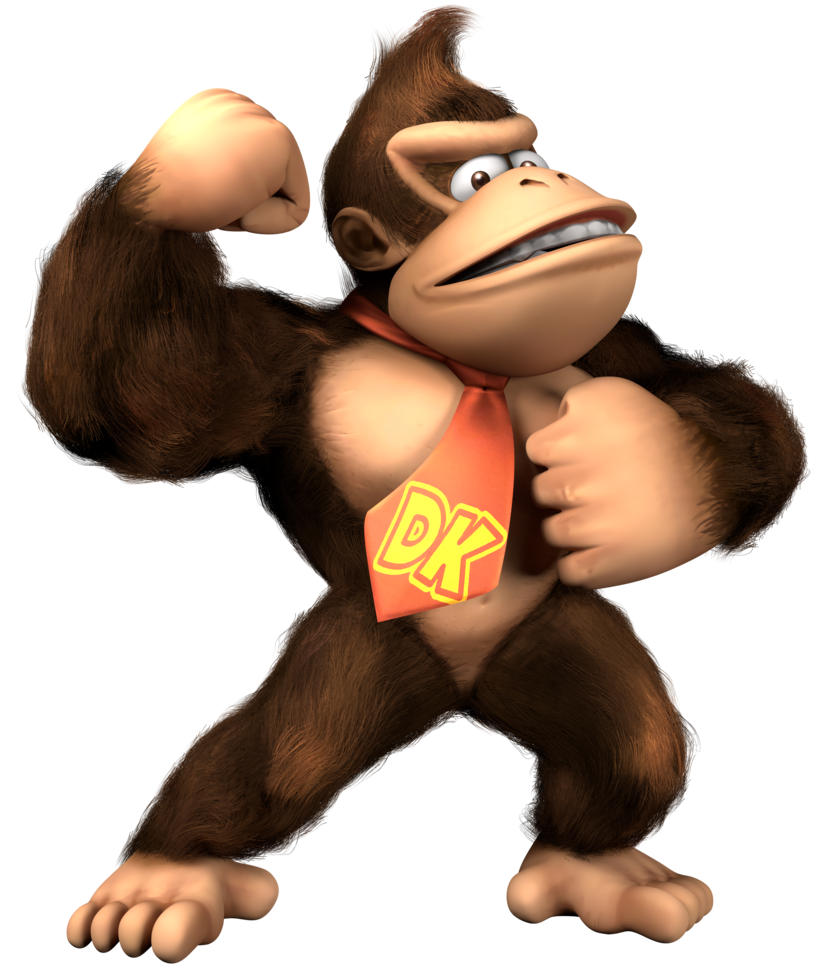
Released on July 9, 1981, the initial 2,000 Donkey Kong arcade games - built in converted Radar Scope units - sold out quickly. “But because the game did so well, even today based on that experience, when somebody tells me, ‘Oh, that name is too strange, it won't work,’ I get very convinced and say, ‘Yes, I've thought of something that is very unique! This is going to do well.’"

“Everyone thought that it wouldn't succeed,” Miyamoto recalled of the initial reaction to the name. So, the name "Donkey Kong" was born, a title universally hated by Nintendo’s U.S.

For the ape - and the game's title - Miyamoto combined Kong from the classic King Kong movies, and Donkey, a word he found in a Japanese-to-English dictionary that was described as stubborn and idiotic. Aware that the name Jumpman wouldn’t really work in the U.S., Nintendo decided to rename the character Mario - his name coming from the landlord who owned the storage facility housing its arcade games. "And then for the ending, I play guitar a little bit, and so the end song I put together as a bit of a parody of a song I used to play on guitar.”Īs the game was readying for release, some final tweaks were made. “I grew up watching a lot of cartoons and anime, so I just had this image that at the beginning there's always this dramatic music to start things off - that's where the dramatic came from," he explained. Miyamoto even contributed the game’s music in an effort to enhance its cinematic-like quality.

Through various levels, Jumpman would dodge barrels thrown by the ape - and other assorted obstacles - in his quest to rescue his love. The narrative changed slightly, but the basic concept remained. Tired of being owned by a “mean, small man,” he escaped his cage and kidnapped his owner’s girlfriend. In the original story concept, the giant animal was the carpenter’s pet. In the book Game Over, Press Start to Continue, Miyamoto noted that he didn’t want the ape to be “too evil or repulsive,” instead making the unusual decision to make him the game’s star. It was really effective at letting me put my ideas in order." At night when nobody was around, you could hang out there for a long time. “And the water from this boiler was also used for a bathtub. “There was a water boiler that was used to make the hanafuda ,” the designer recalled in 2016. Surprisingly, many ideas came to Miyamoto while he washed up in the company bathtub. And the hero was no longer a sailor but rather a brave carpenter, originally called “Jumpman.” There’d still be a damsel in distress, but now she was held captive by a giant ape. When Nintendo was unable to secure the cartoon’s rights, Miyamoto created new characters but based their conflict on the classic Popeye love triangle. Originally, Miyamoto wanted to use the story of Popeye, the classic cartoon character that was always saving his love, Olive Oyl, from the villainous Brutus. “So, from both of those past experiences, I was always thinking about what's the right angle to draw a picture from or to view something from and was constantly thinking about perspective in that sense.” “When I was younger, I used to draw my own comics, and in school I studied industrial design,” Miyamoto recalled to NPR decades later. Rather than creating shooter games like Space Invaders or Centipede, Miyamoto wanted to infuse his game with a narrative, and he wanted the visuals to further reflect a comic book influence. He also brought with him a perspective unlike anything in gaming at the time.

What Miyamoto lacked in experience he more than made up for in creativity. The project was given to Shigeru Miyamoto, a staff artist at Nintendo who had never developed a game in his life. In an effort to recoup some of the money spent on the failed Radar Scope release, Nintendo sought to find a way to convert the arcade game’s expensive hardware into another product.


 0 kommentar(er)
0 kommentar(er)
